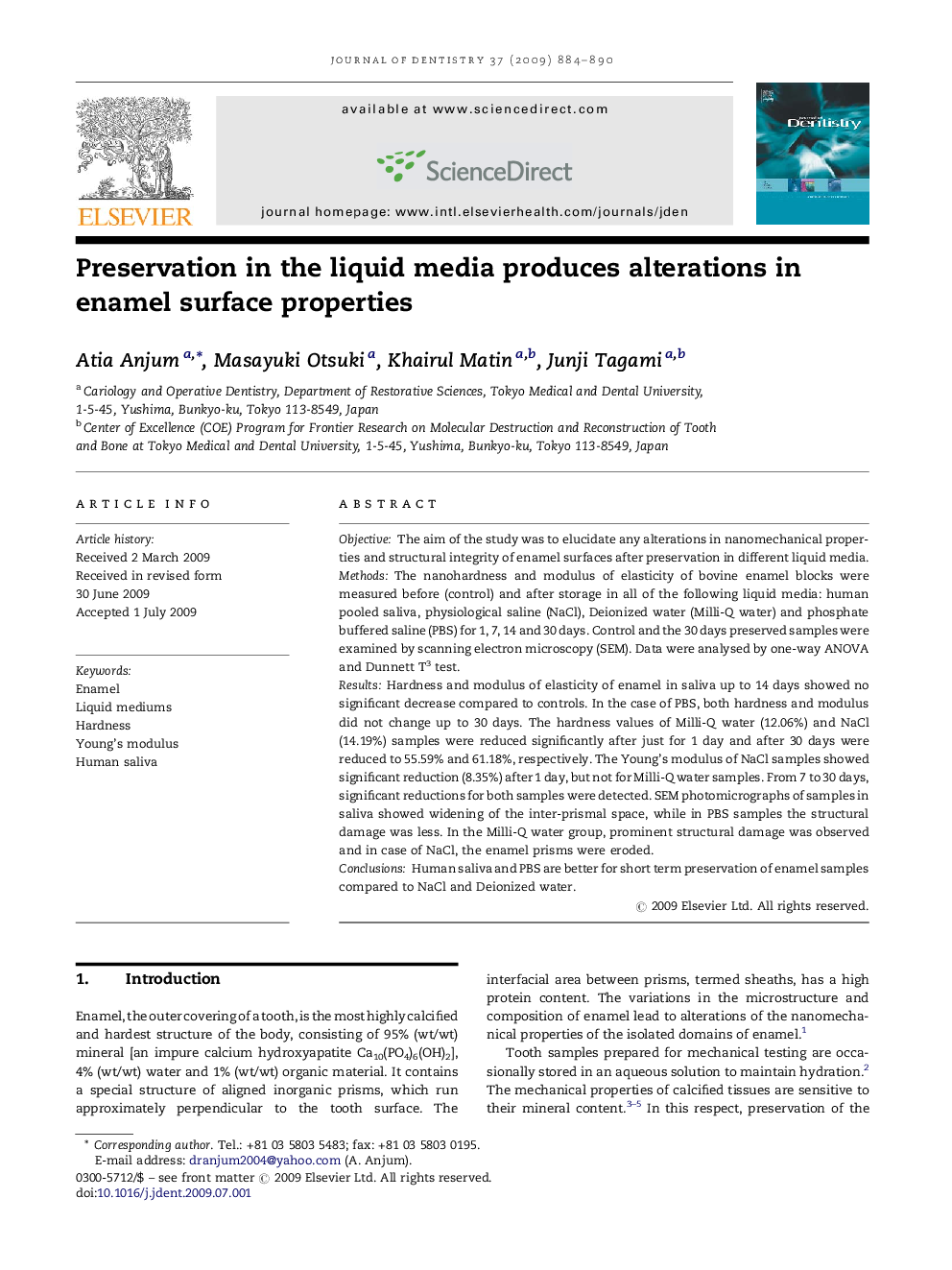| کد مقاله | کد نشریه | سال انتشار | مقاله انگلیسی | نسخه تمام متن |
|---|---|---|---|---|
| 3145612 | 1197087 | 2009 | 7 صفحه PDF | دانلود رایگان |

ObjectiveThe aim of the study was to elucidate any alterations in nanomechanical properties and structural integrity of enamel surfaces after preservation in different liquid media.MethodsThe nanohardness and modulus of elasticity of bovine enamel blocks were measured before (control) and after storage in all of the following liquid media: human pooled saliva, physiological saline (NaCl), Deionized water (Milli-Q water) and phosphate buffered saline (PBS) for 1, 7, 14 and 30 days. Control and the 30 days preserved samples were examined by scanning electron microscopy (SEM). Data were analysed by one-way ANOVA and Dunnett T3 test.ResultsHardness and modulus of elasticity of enamel in saliva up to 14 days showed no significant decrease compared to controls. In the case of PBS, both hardness and modulus did not change up to 30 days. The hardness values of Milli-Q water (12.06%) and NaCl (14.19%) samples were reduced significantly after just for 1 day and after 30 days were reduced to 55.59% and 61.18%, respectively. The Young's modulus of NaCl samples showed significant reduction (8.35%) after 1 day, but not for Milli-Q water samples. From 7 to 30 days, significant reductions for both samples were detected. SEM photomicrographs of samples in saliva showed widening of the inter-prismal space, while in PBS samples the structural damage was less. In the Milli-Q water group, prominent structural damage was observed and in case of NaCl, the enamel prisms were eroded.ConclusionsHuman saliva and PBS are better for short term preservation of enamel samples compared to NaCl and Deionized water.
Journal: Journal of Dentistry - Volume 37, Issue 11, November 2009, Pages 884–890